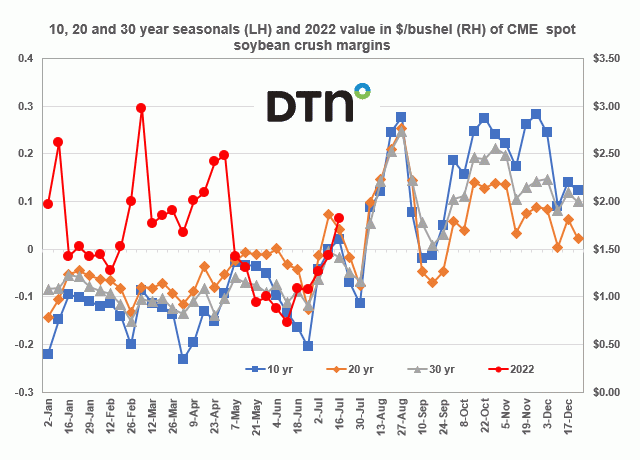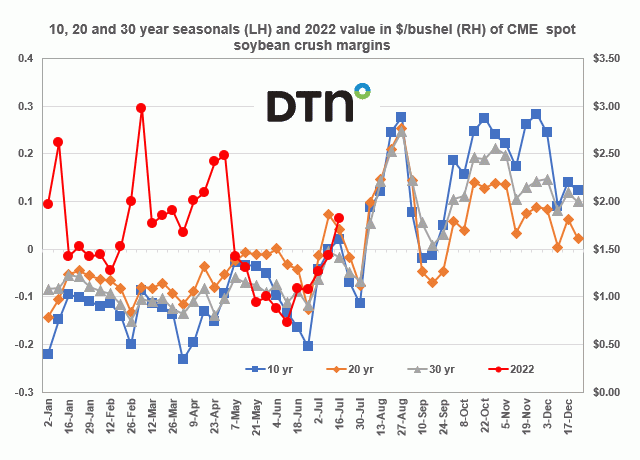Fundamentally Speaking
Third Highest Rated Soybean Crop
Similar to the situation with corn, it was surprising USDA increased U.S. soybean ratings this past week by 1% in the combined good and excellent categories to 69% vs. expectations of a 1% decline in light of rather stressful growing conditions in large parts of the Midwest and Delta the prior week.
This compares to the 54% year ago rating and 63% for the five-year average.
P[L1] D[0x0] M[300x250] OOP[F] ADUNIT[] T[]
This year's U.S soybean crop rating as of week 29 which is the third week in July using our usual ratings system (where we weight the crop based on the percent in each category and assign that category a factor of 2 for very poor, 4 for poor, 6 for fair, 8 for good, and 10 for excellent and then sum the results) is 750.
This is above the five-year average of 729, the ten-year average of 716 and the 20-year average of 715.
As a matter of fact, this year's 750 rating is tied for third highest since 1994 and implies the crop is in very good shape.
As opposed to corn, the relation between week 29 crop ratings vs. the percent that the final soybean yield deviates from the 30-year trend is not that strong as August really is the critical developmental time for soybeans.
Nonetheless this chart shows soybean crop ratings as of week 29 since 1986 with the yellow box above denoting the percent that soybean yields deviated from the 30-year trend for each season.
We see that the average percent deviation for all the years with week 29 soybean ratings at 750 or above is 6.3% above trend, which this year we calculate at 49.0 bushels per acre, implying a 2020 yield this season of 52.1 bpa vs. current USDA figure of 49.8.
© (c) Copyright 2020 DTN, LLC. All rights reserved.






Comments
To comment, please Log In or Join our Community .